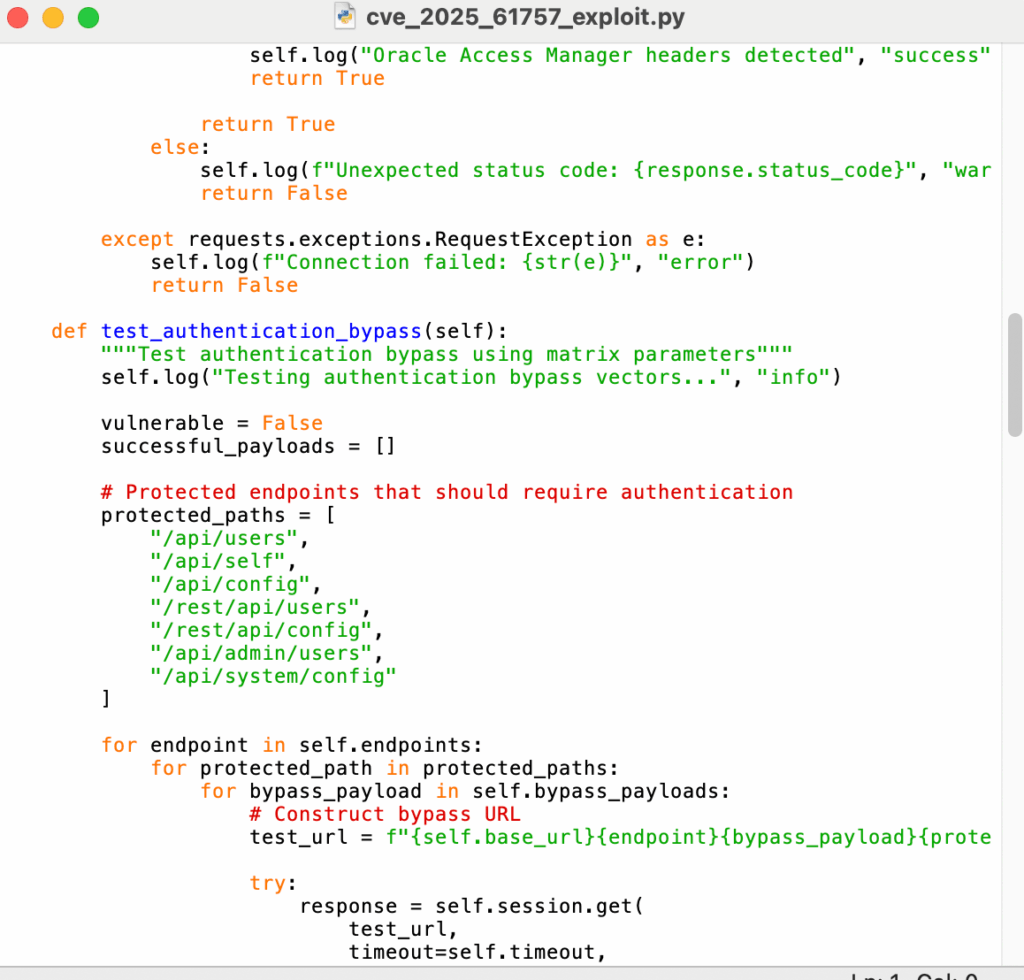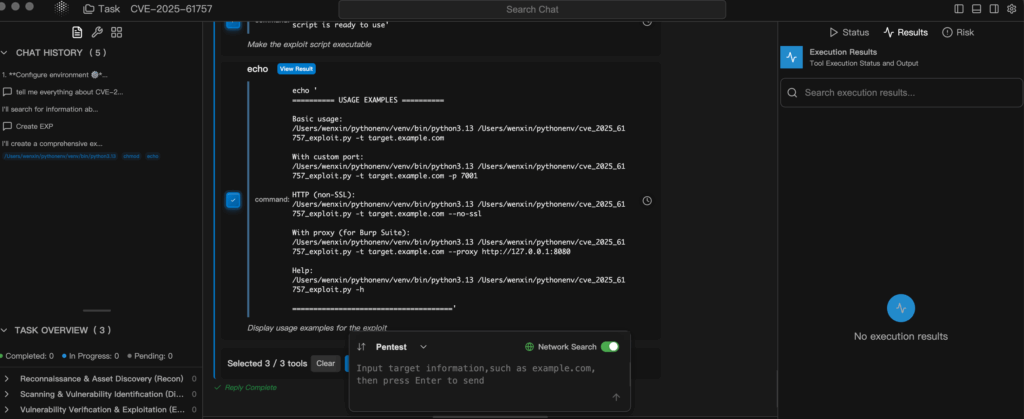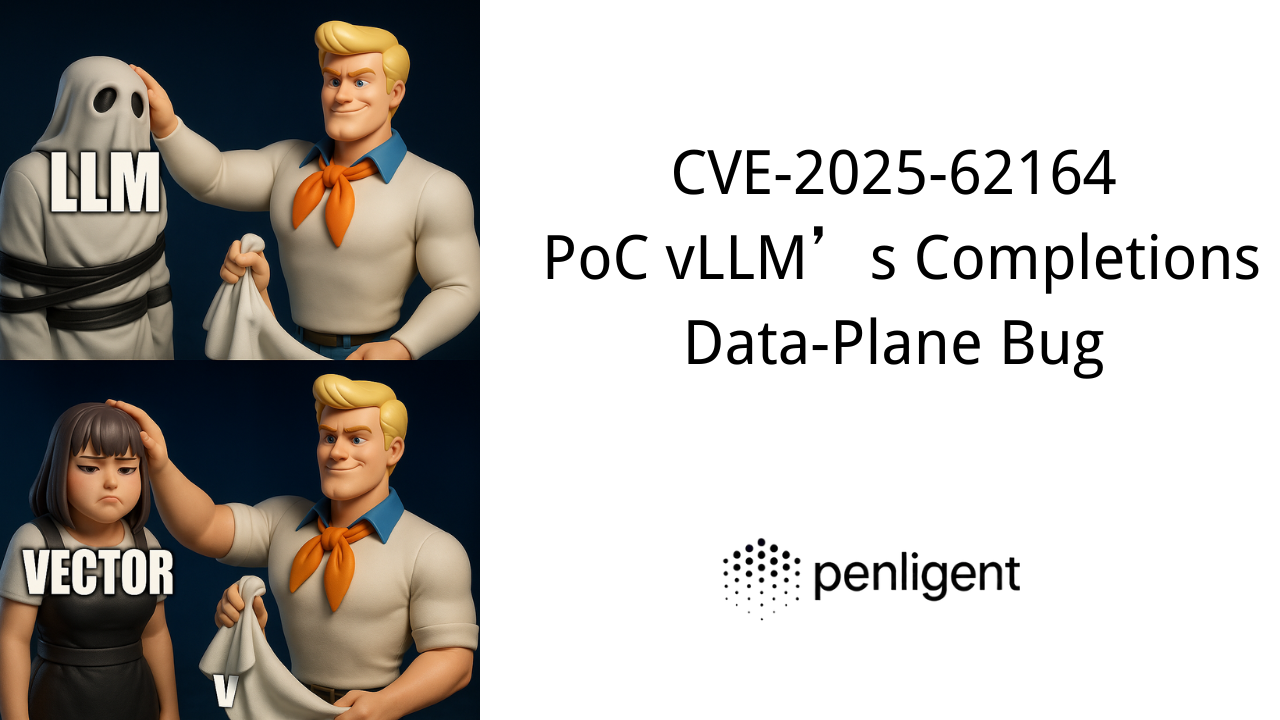Oracle Identity Manager (OIM) is the sort of system you don’t notice until it breaks. It provisions identities, manages entitlements, issues or brokers access, and often sits upstream of every serious enterprise application. When a vulnerability lands in OIM, it’s rarely “just another CVE.” CVE-2025-61757 is a critical example: an unauthenticated, network-reachable RCE in OIM’s REST WebServices component that can lead to full takeover of the identity tier. NVD summarizes it plainly: affected supported versions are 12.2.1.4.0 and 14.1.2.1.0, exploitation requires no authentication, occurs over HTTP, and yields high-impact compromise across confidentiality, integrity, and availability, with a CVSS 3.1 score of 9.8 (Critical). (NVD)
What makes this CVE worth a deeper, engineer-grade read is not only its score, but where it lives. Identity platforms are the trust root of modern enterprises. A remote attacker who executes code on OIM is one step away from forging identities, tampering with role assignments, or pivoting into adjacent middleware and application tiers. In other words, CVE-2025-61757 is an identity take-over primitive, not a narrow app bug.
The most cited public analysis: why this chain works
Among publicly available writeups, the Searchlight Cyber research post (“Breaking Oracle’s Identity Manager: Pre-Auth RCE”) is currently the most referenced, detailed analysis for CVE-2025-61757, echoed by SANS and other trackers. (Searchlight Cyber) Their core claim is that the vulnerability is a two-stage chain:
- a pre-authentication bypass in a centralized Java security filter that protects the REST management surface, and
- abuse of a high-privilege administrative/script management function exposed by those REST APIs, culminating in remote code execution. (Searchlight Cyber)
The exact payload mechanics are not what matters for defenders (and shouldn’t be repeated outside an authorized lab). What matters is the pattern: a classic “central filter + brittle allow-list” design, where authentication is enforced by matching request URIs against a permissive whitelist. In old-school enterprise Java apps, this is common; in security terms, it’s a recurring foot-gun. If your access control depends on string or regex matching across complex URI parsing rules, you’re betting that every upstream component normalizes paths the same way. That bet tends to lose.
A safe way to capture the root-cause shape is to look at an abstracted version of the logic:
// Pseudocode illustrating the anti-pattern (not product code)
if (request.uri.matches(ALLOWLIST_PATTERN) || request.query.equalsIgnoreCase("SPECIAL_CASE")) {
chain.doFilter(request, response); // skips auth
} else {
enforceAuthentication();
}
Once attackers can route around the auth gate, any powerful admin endpoint becomes a potential execution trampoline. Searchlight’s main takeaway is not “this specific endpoint is dangerous,” but “REST admin surfaces inside IAM products often include script compilation, connector management, or workflow hooks with implicit trust.” When those are exposed without auth, you get RCE by design, not by accident. (Searchlight Cyber)
The broader engineering lesson is useful beyond this single CVE: centralized filters with allowlists are a structural vulnerability class. If you’re doing code review on your own Java services (or auditing vendor middleware), treat “central allow-list auth” as a smell that deserves adversarial testing.

Affected versions and patch context
Oracle fixed CVE-2025-61757 in the October 2025 Critical Patch Update (CPU), released on 2025-10-21. (Oracle) The supported affected versions called out in multiple trackers are:
| Produit | Component | Affected Supported Versions | Patch Line |
|---|---|---|---|
| Oracle Identity Manager (Fusion Middleware) | REST WebServices | 12.2.1.4.0, 14.1.2.1.0 | Patched in CPU Oct 2025 |
This aligns across NVD, Wiz’s vulnerability DB, and runZero’s exposure writeup. (NVD)
A subtle but important operational point: Oracle CPUs are quarterly. Enterprises that don’t have a tight CPU intake and rollout muscle tend to accumulate “patch debt” in identity and middleware stacks because they’re perceived as stable, low-change systems. CVE-2025-61757 breaks that assumption. It’s not a bug you can leave for “next quarter” if your REST management plane is reachable from untrusted networks.
Attack surface reality: why this CVE will be scanned fast
Even without discussing exploit details, the shape of the CVSS vector tells you why automated threat actors care. NVD and Wiz list it as:
- AV:N (network reachable),
- AC:L (low complexity),
- PR:N/UI:N (no privileges, no user interaction),
- C:H/I:H/A:H (complete impact). (NVD)
That combination is the “green light” for commodity scanners. The moment a PoC lands in public channels, it becomes a one-request fingerprint + follow-on chain in botnets. Identity servers that are quietly exposed through misconfigured load balancers, legacy NAT rules, or vendor remote-support holes tend to show up in those scans quickly.
You also have a larger context issue: Oracle middleware has been a high-value target in 2025, with multiple critical unauthenticated bugs in adjacent products (WebLogic, EBS, marketing modules) making it into active campaigns. Qualys’ October CPU review explicitly highlights Fusion Middleware criticals as a high-risk cluster. (Qualys) This increases the likelihood that attackers will chain OIM compromise into broader Oracle estate operations.
Defensive verification without turning detection into exploitation
For most teams, the first task is simple: identify exposure, not emulate attackers. A safe, authorized workflow looks like this:
- Inventory OIM versions across environments and compare against affected lines.
- Constrict management access immediately (network ACLs, VPN gate, ZTNA), even before patch windows.
- Hunt REST admin anomalies in access logs: high-entropy request URIs, bursts from unfamiliar IPs, or admin-class endpoints invoked at non-change hours.
To keep this concrete, here’s a defensive-only version matcher you can blend into your asset inventory jobs:
# Defensive-only: match discovered OIM versions to affected set
from packaging import version
AFFECTED = [
("12.2.1.4.0", "12.2.1.4.0"),
("14.1.2.1.0", "14.1.2.1.0"),
]
def is_affected(v: str) -> bool:
v = version.parse(v)
return any(version.parse(lo) <= v <= version.parse(hi) for lo, hi in AFFECTED)
for v in ["12.2.1.4.0", "14.1.2.1.0", "14.1.2.2.0"]:
print(v, "affected?" , is_affected(v))
If you can’t reliably extract versions from banners, prioritize internal CMDB data, host package manifests, or Oracle home metadata. The key is to avoid “probing” your identity tier in ways that increase operational risk.
Post-patch hunting: what compromise would look like
Searchlight’s chain implies a specific class of behaviors you should watch for, even after upgrading:
- REST management endpoints being hit by unknown sources, especially from public IP ranges.
- Management verbs used outside change windows, particularly anything that compiles, uploads, or alters workflows/connectors.
- New service accounts or role changes that don’t line up with ticketed operations.
RunZero and Wiz both advise reviewing logs for unusual REST activity and narrowing management reachability as part of hardening, not just remediation. (RunZero)
The reason to take this seriously after patching is that pre-auth RCE bugs are often exploited before disclosure. If the REST tier was exposed, assume it may have been touched.

Mitigation that actually reduces risk
Oracle’s official guidance is to apply the October 2025 CPU updates, which include the fix. (Oracle) From an engineering standpoint, the risk-reducing actions stack like this:
- Patch immediately on any affected supported version.
- Remove public reachability of REST management planes. Identity admin APIs should not be Internet-facing.
- Rotate privileged credentials and require MFA where operationally possible.
- Baseline and monitor OIM configuration drift (roles, connectors, workflows).
- Segment the IAM tier so that even if OIM is compromised, lateral movement is slowed.
None of this is novel, but CVE-2025-61757 is a case study in why IAM hardening can’t be treated as “set and forget.” Identity middleware is now firmly in the same threat priority bucket as edge VPNs and web gateways.
Why this CVE matters for AI-security engineers
If you’re working at the intersection of AI systems and security, OIM is an increasingly relevant upstream dependency. Your model-serving clusters, data platforms, CI/CD, and even internal LLM tools often inherit access decisions from corporate IAM. Pre-auth takeover of identity infrastructure is how attackers “legitimize” later AI-stack compromise: they don’t need to smash a model server if they can mint the identity that’s allowed to change it.
From a defensive AI perspective, CVE-2025-61757 is a reminder to treat identity telemetry as first-class signal in your detection pipelines. If you’re building agentic security tools, the most realistic “high-impact automation” isn’t speculative exploit generation — it’s high-fidelity inventory, blast-radius modeling, and patch orchestration for identity and middleware estates.
A quiet note on automation (when it fits)
In large Oracle estates, version sprawl is real: dev, QA, DR, and legacy tenants often lag by quarters. Human-in-the-loop automation platforms such as Penligent can help with fleet-wide OIM version inventory, exposure validation, and remediation tracking, without pushing teams into risky exploitation. When the vulnerability is identity-tier critical, speed and accuracy in the “find → prioritize → fix” loop matters more than anything else.
Closing
CVE-2025-61757 is not just a bug; it’s a high-leverage identity-tier compromise route born out of a known enterprise Java anti-pattern. The immediate ask is obvious — patch the affected OIM versions and lock down REST management access. The longer-term take is bigger: if your IAM control plane is reachable, it will be attacked — and centralized allow-list filters will be bypassed. Treat this CVE as a forcing function to audit how your identity systems are exposed, authenticated, and monitored.


